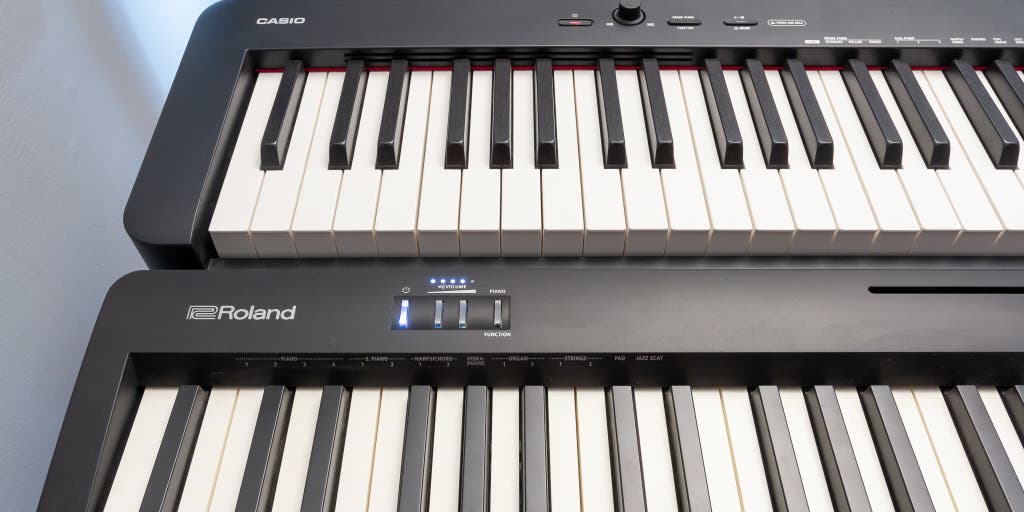1. Introduction
Pianos are a popular instrument for both beginners and experienced musicians alike. But when it comes to choosing the right piano for your needs, it can be difficult to decide between an acoustic or digital piano. In this article, we will explore the differences between acoustic and digital pianos so that you can make an informed decision on which type of piano is best for you.
2. Definition of an Acoustic Piano
An acoustic piano is a traditional type of piano that has been around since the 1700s. It is composed of a wooden frame and metal strings that are struck by hammers when the keys are pressed. The sound is produced by the vibration of the strings, which is then amplified by the soundboard and resonated through the body of the instrument.
3. Definition of a Digital Piano
A digital piano is a modern version of the classic acoustic piano. It uses electronic components to replicate the sound of an acoustic piano and can produce a wide range of sounds and effects. Digital pianos usually have weighted keys that simulate the feel of an acoustic piano and some models even include built-in speakers for added convenience.
4. Physical Differences between Acoustic and Digital Pianos
The most obvious difference between an acoustic and digital piano is their physical appearance. Acoustic pianos are typically much larger than digital pianos, as they require more space to house all of their components. Digital pianos are typically smaller and more compact, making them easier to transport and store.
5. Sound Quality Differences between Acoustic and Digital Pianos
The sound quality of an acoustic and digital piano is another key difference between the two types of instruments. An acoustic piano produces a richer, fuller sound due to its strings and wooden frame, while a digital piano produces a more synthetic sound due to its electronic components. However, some high-end digital pianos can produce very realistic tones that closely mimic those produced by an acoustic instrument.
6. Playability Differences between Acoustic and Digital Pianos
The playability of an acoustic and digital piano also differs significantly. An acoustic piano requires more effort to play, as each note must be struck with greater force in order to produce sound. On the other hand, digital pianos require less effort as they use weighted keys that simulate the feel of an acoustic instrument without requiring as much force from the player.
7. Maintenance Differences between Acoustic and Digital Pianos
The maintenance requirements for an acoustic versus digital piano also differ greatly. An acoustic piano requires regular tuning in order to stay in tune, while a digital piano does not need to be tuned at all as it uses electronic components instead of strings to produce sound. Additionally, an acoustic piano requires more frequent cleaning than a digital one in order to keep its strings from corroding over time due to dust or moisture buildup within its frame.
8 Cost Differences between Acoustic and Digital Pianos
The cost of purchasing either an acoustic or digital piano can vary greatly depending on several factors such as size, brand, condition, etc.. Generally speaking however, an acoustic piano will typically cost more than a comparable digital model due to its larger size and greater complexity in construction required for producing sound acoustically versus electronically via speakers or headphones .
< h 2 > 9 . Advantages of Owning an Acoustic Piano < / h 2 >
When it comes to advantages , owning an acoustic piano provides several benefits over owning a digital one . Firstly , it produces a richer , fuller sound due to its wooden frame and metal strings . Secondly , it offers greater control over dynamics due to its weighted keys . Lastly , it has greater resale value than a comparable digital model .
< h 2 > 10 . Advantages of Owning a Digital Piano < / h 2 >
Owning a digital piano also provides several advantages over owning an acoustic one . Firstly , it requires less maintenance than an acoustic model , as no tuning is required . Secondly , it offers greater portability due to its smaller size . Thirdly , it provides access to various sounds beyond those available on traditional pianos such as electric pianos , organs , etc . Lastly , some models include built-in speakers for added convenience .
< h 2 > 11 . Conclusion < / h 2 >
In conclusion , both types of pianos offer unique advantages depending on your needs or preferences . Ultimately , choosing between an acoustic or digital piano depends on your budget , desired features , playability preferences , etc . As always , it’s best to try out both types before making your final decision so that you get exactly what you’re looking for !

